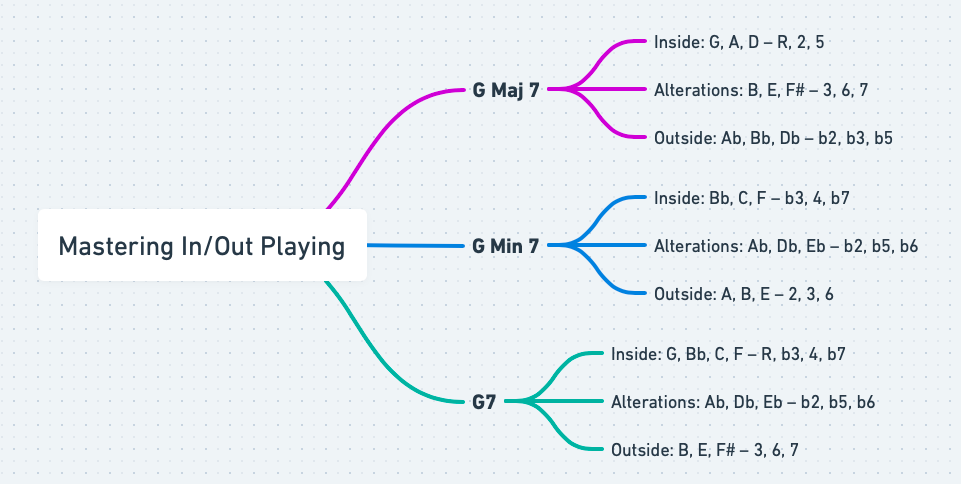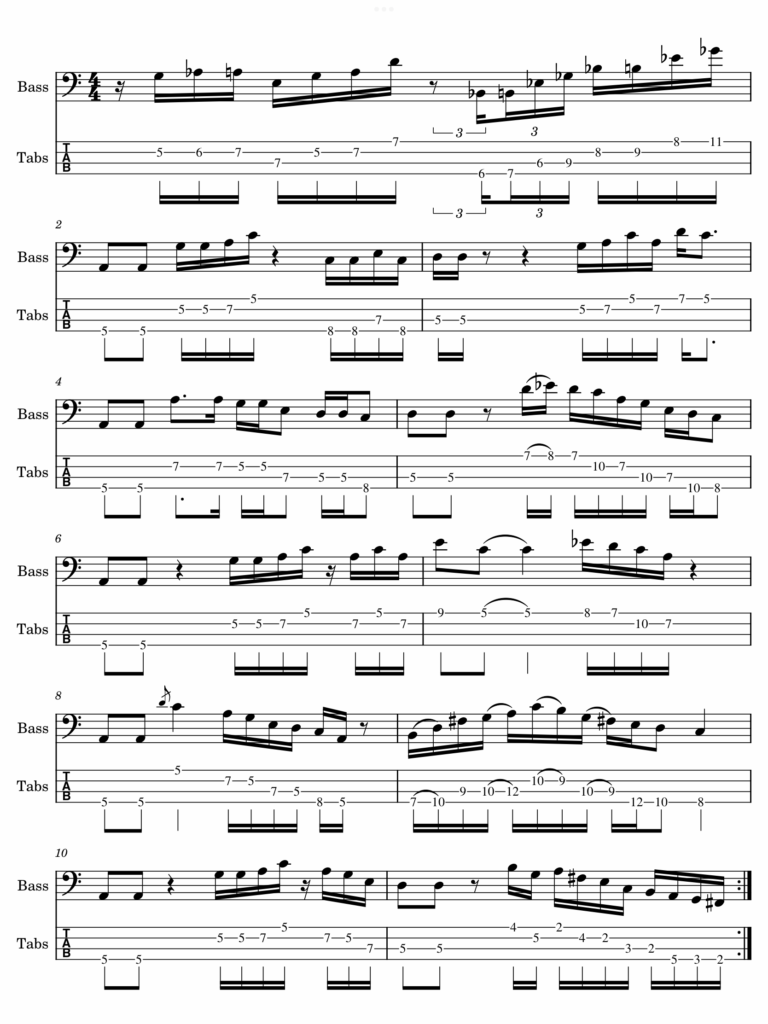The major pentatonic scale is formed by a major triad with the addition of the 2nd and 6th of the major scale. You’ll be able to use it on major chords, dominant chords and also minor chords, let me explain why.
For every major key, there is a corresponding relative minor key that shares the same alterations. Therefore, each major pentatonic scale has a matching minor pentatonic scale; they are essentially the same scale. When playing over a major or minor chord, you can use either scale. This is because the minor pentatonic is essentially an inversion of the major pentatonic, containing all the same notes in a different order. If you reorder all the notes within the scale you will get five major pentatonic modes.
Pentatonic Modes

Basic Exercises

Connecting Pentatonics
When incorporating pentatonic scales into your music, especially for fills and phrases, a variety of pentatonic scales can be utilised over the same chord. Consider a GMaj7 chord: a G Major Pentatonic (G A B D E) is a go to scale. However, you’re not limited to just this. Using the relative minor, E Minor Pentatonic, introduces a bluesier essence, diverging from the major scale’s sound a little. Moreover, an array of pentatonic scales can be applied to add extensions or alterations to the chord.
Major, Minor, and Dominant Chords: Your Options
Major Chords – Enhancing GMaj7
For a GMaj7 chord, the G Major Pentatonic is a straightforward choice, but don’t overlook the D Major Pentatonic (D E F# A B), starting from the 5th, and the A Major Pentatonic (A B C# E F#) from the 2nd. These selections can transform the chord into a GMaj7#11, offering a Lydian mode’s richness.
Minor Chords – The GMin7 Possibilities
With a GMin7, a G Minor Pentatonic (G Bb C D F) fits perfectly. Yet, an A Minor Pentatonic (A C D E G) can bring forth a Dorian mode’s sound. Additionally, a D Minor Pentatonic (D F G A C) is another valuable choice.
Dominant Chords – G7’s Flexibility
Navigating a G7 chord, a G Major Pentatonic (G A B D E) is a traditional pick. But, exploring a Bb Major Pentatonic (Bb C D F G) introduces a bluesy vibe. An F Major Pentatonic (F G A C D) leans towards a Gsus sound, while an Ab Major Pentatonic (Ab Bb C Eb F) shifts the harmony to a G7b9.
Practical Application: Mixing Pentatonics
Let’s simplify the application with a diagram showcasing most pentatonic scales suitable for the three common chords. Experiment with these scales, blending them creatively in your fills and phrases. Some choices might sound more ‘outside’ than others, especially when played a whole or half step away from the tonal centre, known as ‘Outside Playing’. Remember, the goal is to seamlessly transition back to an ‘inside’ scale.
Mastering In/Out Playing
For inspiration and a deeper understanding of In/Out Pentatonic playing, immerse yourself in the works of McCoy Tyner on “The Real McCoy” and Chick Corea’s “Now He Sings, Now He Sobs”. Their expertise in navigating between inside and outside playing with pentatonics is unparalleled.
Notes & Pentatonics Diagram
Every root note discussed corresponds to the Major Pentatonic shape. From this foundation, you’re encouraged to explore all other possible scales over a given chord, expanding your musical vocabulary.



Practice Routine
Week One: Monday to Friday
- Pentatonic Shapes – Start by exploring the different shapes of the pentatonic scale.
- Pentatonic Applications – Learn how these shapes fit into different chords and the different options available.
- Pentatonic Patterns – Practice various patterns to build dexterity and familiarity.
- Pentatonic Fills – Learn fills and use them in your playing to add creativity.
- Practical Application – Take a groove you enjoy and apply all the concepts you’ve practiced throughout the week.
Pentatonic Playing Revealed
Pentatonic Playing Revealed eBook – BassAdvice 📘 Page Count: 27 pages of comprehensive lessons 🎼 Includes: Standard notations, TABS, audio samples and tutorials video links 🚀 Quick Access: Instant digital download for immediate learning 🎶 Explore: Master the pentatonic and blues scales through clear, structured lessons designed for all levels—from beginners enhancing their basics to…

